Bed Worms: Unraveling the Mystery
In the realm of sleep disturbances, the term “bed worms” often emerges, causing distress and confusion. But what exactly are these elusive creatures? Let’s embark on a journey to uncover the truth.
The term “bed worms” often sends shivers down the spine of anyone who hears it. Conjuring images of tiny creatures crawling around one’s sleeping space, it’s a concept that’s both intriguing and unsettling. But what exactly are bed worms? The name might suggest a type of worm that specifically targets beds, but the reality is a bit more complex. While the term is thrown around quite a bit, especially in online forums and discussions, it’s essential to delve deeper into what it truly represents to address any concerns properly.
Over the years, the term has been used to describe various tiny pests that people might find in their beds. However, it’s crucial to note that most of these creatures aren’t worms in the traditional sense. Instead, they can range from larvae of certain insects to other small pests. Understanding what bed worms really are can help individuals take the necessary steps to deal with them effectively.
The Real Culprits: Bed Worms or Something Else?
When people refer to “bed worms,” they might be thinking of several different pests. The term is somewhat of a catch-all phrase, often used to describe anything from the larvae of carpet beetles to the ever-dreaded
Distinguishing between these pests is vital. Each requires a unique approach for eradication, and misidentification can lead to ineffective treatments. By understanding the real culprits behind the term “bed worms,” one can take targeted action to address the issue.
Bed Worms Parasite: Myth or Reality?
The idea of parasitic worms taking up residence in our beds is undoubtedly a nightmare scenario. However, the reality is that most creatures labeled as “bed worms” aren’t parasitic worms at all. Instead, they are often other types of pests, such as
It’s essential to differentiate between actual parasitic worms and the pests commonly referred to as bed worms. While the latter can be a nuisance, they don’t pose the same health risks as some parasitic worms. Proper identification ensures that the right treatment methods are employed, leading to effective eradication.
Tiny Black Worms on Bed: Causes and Identification
Finding tiny black worms on one’s bed can be an alarming experience. These could be anything from larvae of certain insects to fibers or hairs that might be mistaken for pests. The first step in dealing with them is proper identification. Once identified, one can understand the cause of their presence and take appropriate action.
Various factors can lead to the appearance of these tiny black “worms.” For instance, they could be larvae of insects attracted to food remnants in the bed. Alternatively, they might be fibers from dark-colored bedding that are mistaken for pests. Proper identification not only provides peace of mind but also guides the necessary steps for prevention and treatment.
Various Kinds of Worms Found in Mattresses
1.
Bed bugs are small, reddish-brown insects that feed on human blood. They are notorious for infesting beds and other furniture. Their bites can cause itching and allergic reactions in some people.
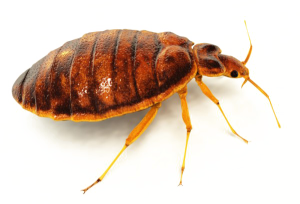
2. Carpet Beetles (Dermestidae family):
While not true “bed worms,” these beetles are sometimes found in beds. The larvae, which are worm-like, feed on natural fibers and can damage bedding, carpets, and clothing.
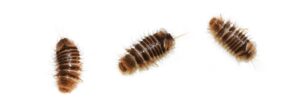
3. Dust Mites (Dermatophagoides spp.):
These microscopic creatures are not insects but arachnids. They feed on dead skin cells and thrive in warm, humid environments like bedding. They don’t bite but can cause allergic reactions in sensitive individuals.
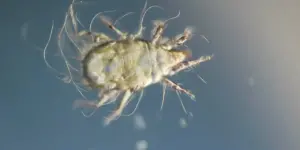
4. Fleas (Siphonaptera):
Fleas are tiny, jumping insects sometimes found in beds, especially if pets sleep there. They bite and feed on blood, causing itchy, red patches.
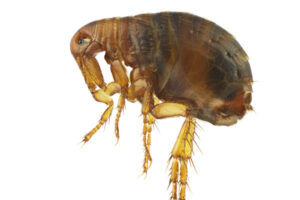
5. Larder Beetles (Dermestes lardarius):
These beetles are known to infest food sources, but they can also be found in other areas of the home, including beds. The larvae stage might be mistaken for worms due to their elongated bodies.
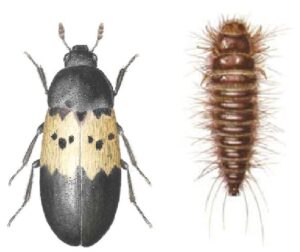
6. Pinworms (Enterobius vermicularis):
Pinworms, commonly called threadworms, are small intestinal parasites primarily affecting children, causing significant anal itching. While they aren’t directly linked to beds, scratching can transfer their eggs to bedding, increasing reinfection risks. Proper hygiene, regular bedding cleaning, and medical consultation are essential for prevention.
The Health Implications
The health implications of bed worms, or the pests commonly mistaken for them, vary. While some are relatively harmless, only causing minor skin irritations, others can pose more significant health risks. For instance,
Beyond the physical health implications, the psychological impact of believing one’s bed is infested with worms can’t be understated. The mere thought can lead to sleepless nights, anxiety, and stress. It’s crucial to address the issue promptly, both for peace of mind and to prevent any potential health issues.
Bed Worms Bites: Symptoms and Treatments
While the term “bed worms” is a misnomer, some of the pests commonly referred to by this name can bite. Recognizing the signs of these bites is essential for proper treatment. Symptoms might include itchy, red marks, swelling, or even a rash. The reaction can vary based on the individual and the specific pest causing the bite.
Treatment for these bites often involves over-the-counter creams or antihistamines to reduce itching and inflammation. However, the best treatment is prevention. By identifying and eradicating the pests responsible, one can avoid future bites and the associated discomfort.
Are Bed Worms Harmful?
The creatures commonly referred to as bed worms can range from being harmless to causing various issues. For instance, while carpet beetle larvae are relatively benign, feeding on natural fibers and not biting humans,
Moreover, even if the pests themselves aren’t harmful, the psychological distress caused by the belief of an infestation can be significant. The key is to stay informed, identify the real culprits, and take appropriate action to ensure a peaceful and healthy sleeping environment.
Prevention and Solutions
Preventing an infestation of the so-called “bed worms” or any bed pests is always better than dealing with an active infestation. Regularly cleaning and vacuuming your sleeping area can significantly reduce the chances of these pests making your bed their home. Ensure that you wash your bedding in hot water and dry them on a high heat setting to kill any potential pests. Additionally, if you’ve recently traveled or purchased second-hand furniture, it’s wise to inspect and clean them thoroughly before introducing them to your living space.
Another effective solution is to use protective covers on your mattresses and pillows. These covers are designed to be impermeable to pests like
What Causes Bed Worms and How to Prevent Them
The term “bed worms” is often a catch-all phrase for various pests that might be found in one’s sleeping area. Factors like traveling, living in densely populated areas, or even simply bringing in a second-hand piece of furniture can introduce these pests into your home.
Regular cleaning and maintenance of your living space can also deter these pests. This includes vacuuming your mattress and the area around your bed, washing your bedding frequently, and decluttering your bedroom. Pests often thrive in neglected areas, so a clean environment can be a significant deterrent. If you suspect an infestation, it’s crucial to act quickly, either by using over-the-counter solutions or seeking professional help.
How to Get Rid of Bed Worms: Effective Strategies
- Identification of the Pest: Before taking any action, it’s crucial to correctly identify the pest. Misidentification can lead to ineffective treatments and wasted resources. Utilize online resources or consult with a pest control professional to ensure you’re targeting the right pest.
- Regular Cleaning and Vacuuming: Pests, including
bed bugs , thrive in neglected areas. Regularly cleaning and vacuuming your sleeping area can significantly reduce their numbers. Focus on seams, crevices, and other hiding spots where these pests might congregate. - Wash Bedding in Hot Water: Heat is an effective killer of many pests. By washing your bedding in hot water and drying them on a high heat setting, you can kill any pests and their eggs that might be present.
- Use Protective Mattress Covers: Protective covers prevent pests from infesting your mattress. They’re designed to be impermeable to pests like
bed bugs , ensuring they can’t enter or exit the mattress, eventually leading to their demise. - Seal Cracks and Crevices: Pests often enter homes through small cracks and crevices. By sealing these entry points, you can prevent them from gaining access to your living spaces and reduce the chances of an infestation.
- Avoid Second-hand Furniture: Second-hand furniture can sometimes harbor pests. If you do decide to bring used items into your home, inspect and clean them thoroughly before introducing them to your living space.
- Consult with Pest Control Professionals: If you’re facing a severe infestation or are unsure about the best course of action, it’s wise to consult with a pest control professional. They can provide expert advice, treatments, and solutions tailored to your specific situation.
Myths and Misconceptions
When it comes to pests in the bedroom, there’s no shortage of myths and misconceptions. One common myth is that
It’s also a common belief that
Tiny Worm in Bed: Separating Fact from Fiction
The sight of a tiny worm-like creature in one’s bed can be alarming. However, it’s essential to separate fact from fiction. In many cases, what one might perceive as a “worm” could be the larva of a different insect, like a carpet beetle. These larvae are harmless, feeding on natural fibers and not posing any threat to humans. On the other hand, actual pests like
Another piece of fiction is the belief that any tiny creature in the bed is a sign of an infestation. While it’s essential to be vigilant, finding a single worm-like creature doesn’t necessarily mean your home is infested. It’s crucial to properly identify the pest and understand its habits before jumping to conclusions. Proper identification ensures that the right treatment methods are employed, leading to effective eradication.
What are Bed Worms? Debunking Common Myths
The term “bed worms” is a bit of a misnomer. In most cases, people referring to “bed worms” are thinking of
Another myth is that bed worms, or
FAQs
Are bed worms and
No, they are distinct.
What are the tiny black worms on my bed?
They could be larvae of different insects or sometimes even misidentified fibers or hairs.
How can I prevent pests in my bed?
Maintain cleanliness, use protective bed covers, and conduct regular inspections.
Are bed worm bites harmful?
Most pests mistaken for bed worms don’t bite. However, other pests like
What causes bed worms?
The term is often misused. Various factors can attract pests to beds, including food remnants, moisture, and warmth.




